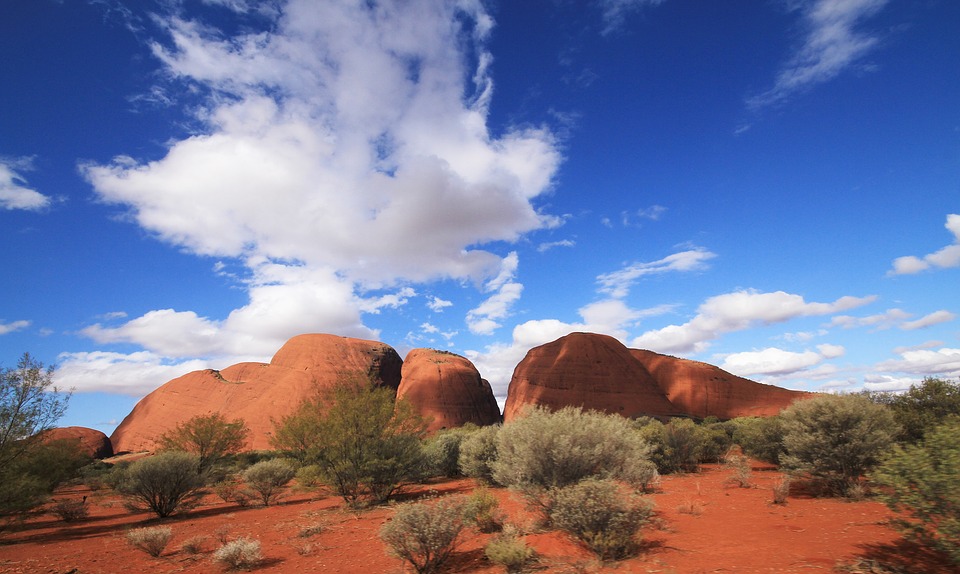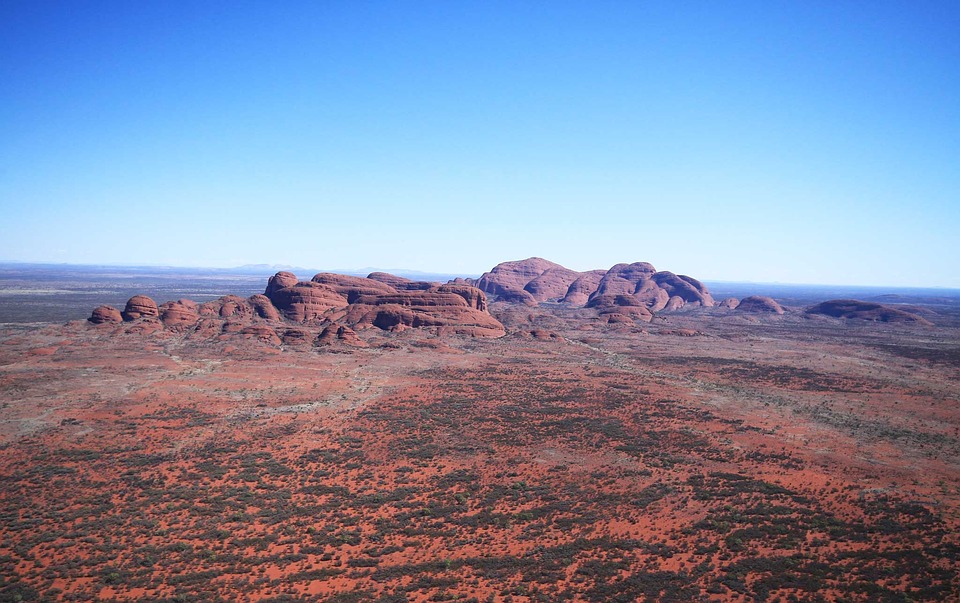Kata Tjuta: How did these Australian mountains form?
by Scott Dutfield · 03/06/2019

How did these rocky ripples form and why are they so different from their more famous sibling?
In Australia’s Red Centre a rocky giant appears to grow from the surrounding flat desert plains. Sticking out like a series of red sore thumbs, 36 domes of the Kata Tjuta rock formation span an area of over 20 square kilometres and reach heights of up to 546 metres above the surrounding plains.
Kata Tjuta, or ‘the Olgas’ as it’s also known, isn’t growing up from the ground but is in fact eroding back into it. Both Kata Tjuta and Uluru are just the tips of huge structures that extend far underground.
Around 550 million years ago, rainfall eroded the mountainous Petermann Ranges in Central Australia. As a result, the slowly broken down rock became sediment, which would eventually be compressed into a 2.5-kilometre-thick layer of conglomerate rock. A conglomerate is a sedimentary rock comprised of rounded pebbles and boulders that become cemented together under immense pressure. This layer became covered by a shallow sea around 500 million years ago, leading to the rock being covered by more sediment such as sand, mud and the remains of sea creatures.
Over millions of years, tectonic movements caused uplift and the folding of the rock layers beneath the water. Then, between 400 and 300 million years ago, the covering water began to recede, exposing Kata Tjuta to the elements. Once that water had receded completely around 500,000 years ago, the conglomerate was subjected to a drier environment. The rocks became coated in a blanket of wind-blown sand, resulting in the series of domes. The vibrant red colour comes from the high concentration of iron-rich sandstone in the conglomerate. As the water levels fell, the iron was exposed to the oxygen in the air and formed iron oxide, the same way red rust forms.

This article was originally published in How It Works issue 115
For more science and technology articles, pick up the latest copy of How It Works from all good retailers or from our website now. If you have a tablet or smartphone, you can also download the digital version onto your iOS or Android device. To make sure you never miss an issue of How It Works magazine, subscribe today!





